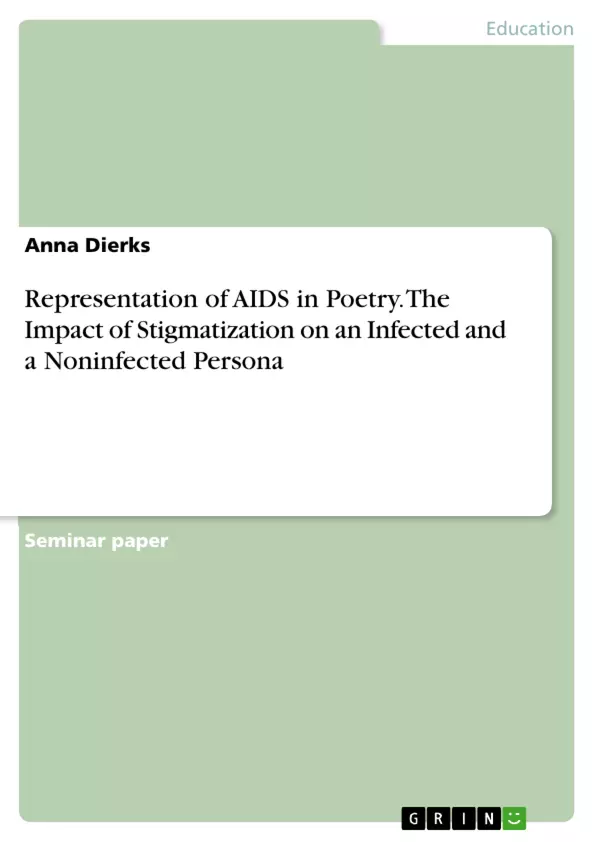Earvin “Magic” Johnson shocked the world when he announced his HIV infection and immediately retired from the L.A. Lakers in 1991 (Stevenson). Up to this point, HIV/AIDS was popularly believed to be a disease that only occurred among homosexual men which was heavily stigmatized. The former basketball star had to face discrimination from his own team mates when they did not want to play with him anymore and rejected him from their team (Moughty). Even though Johnson took a break from basketball and was hurt by his team mates reactions, he became one of the most important spokesmen for HIV/AIDS education (Moughty). His case helped the public understand that the virus does not only occur among gay communities and should be of everyone’s concern (Moughty).
The AIDS epidemic began in the U.S. in the early 80’s when the first few reported cases of gay men were made public. The number of infections increased rapidly and the majority of the people living with AIDS were gay. Because of this, stereotypes and stigma for the sick people developed quickly which had a very negative impact on their quality of life and their health status. Isolation, depression and self-harm were among consequences to the society’s rejection of these gay men as well as other people with HIV/AIDS. Stigma and stigmatization has many levels. It does not only involve discrimination from people who are not affected, but also refers to self-perception of the infected person, metaphors of the illness and intersection with other prejudices. Apart from the strong stigmatization of the illness, the medical condition itself is already a great burden for the infected persons.
Although today, symptoms can be medicated effectively so that an unrestricted life is possible, this was not the case in the early years of the epidemic when medical experts could not even determine the way of transmission. This interrelates with the great fear that society developed and the resulting social distance to sufferers. This issue was picked up by filmmakers, art and literature. In this term paper, I investigate upon the question how HIV/AIDS related stigma is represented in poetry in the time from the beginning of the epidemic up to the early 1990’s in the United States. [...]
Inhaltsverzeichnis (Table of Contents)
- Introduction
- Theoretical Background
- Concise Overview of the AIDS Epidemic (and Attitudes towards Homosexuality) in the United States from 1981 to the 1990's
- Metaphorical Thinking of AIDS
- HIV/AIDS-related Stigma and its Effects
- Analysis
- Depiction of AIDS
- Dealing with Stigmatization
- Infected Lyrical I
- Noninfected Lyrical I
- Conclusion
- References
Zielsetzung und Themenschwerpunkte (Objectives and Key Themes)
This term paper investigates the representation of HIV/AIDS-related stigma in poetry during the early years of the epidemic in the United States. The paper focuses on the period from the beginning of the epidemic up to the early 1990's, examining how stigma is portrayed through the perspective of both infected and noninfected lyrical personas.
- The impact of HIV/AIDS stigma on individuals and society
- The role of metaphorical thinking in shaping perceptions of HIV/AIDS
- The portrayal of HIV/AIDS in poetry as a reflection of societal attitudes
- The experiences of both infected and noninfected individuals living with the stigma of HIV/AIDS
- The historical context of the AIDS epidemic in the United States and its influence on poetic representations of the disease
Zusammenfassung der Kapitel (Chapter Summaries)
- Introduction: This chapter introduces the topic of the term paper and sets the context for the research. It discusses the case of Earvin “Magic” Johnson as a prominent example of the impact of HIV/AIDS stigma on individuals.
- Theoretical Background: This section provides a concise overview of the historical development of the AIDS epidemic in the United States from 1981 to the 1990's. It examines the stigmatization of homosexuality and the emergence of HIV/AIDS-related stigma, highlighting the influence of media portrayals and societal attitudes. It also explores the role of metaphorical thinking in shaping perceptions of HIV/AIDS, emphasizing how metaphors contribute to the stigmatization of the illness and its sufferers.
- Analysis: This chapter delves into the analysis of poetry that revolves around AIDS, examining the depiction of the disease in general and the representation of stigma from the perspectives of both infected and noninfected lyrical personas.
Schlüsselwörter (Keywords)
The primary keywords and focus topics of this term paper include: HIV/AIDS, stigma, poetry, representation, homosexuality, metaphors, discrimination, medical condition, societal attitudes, lyrical persona, United States, 1980s, 1990s.
- Quote paper
- Anna Dierks (Author), 2018, Representation of AIDS in Poetry. The Impact of Stigmatization on an Infected and a Noninfected Persona, Munich, GRIN Verlag, https://www.grin.com/document/442121



